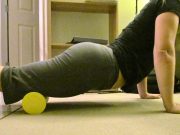In today’s fast-paced world, where stress and anxiety often seem to be constant companions, the quest for mental well-being has never been more crucial. Amidst the myriad strategies to nurture mental health, one powerful yet often overlooked tool stands out: movement. The power of movement extends far beyond physical fitness; it is a transformative force that can significantly bolster mental health. Whether it’s a brisk walk in the park, a yoga session at dawn, or an impromptu dance in the living room, movement has the remarkable ability to uplift our spirits, calm our minds, and enhance our emotional resilience. This article delves into the profound connection between movement and mental health, offering insights into how incorporating physical activity into our daily routines can serve as a compassionate ally in our journey towards emotional well-being. Let us explore how embracing movement, in all its forms, can become a nurturing practice that supports our mental health and enriches our lives.
Understanding the Connection Between Physical Activity and Mental Well-being
Physical activity is more than just a means to maintain physical health; it serves as a powerful tool for enhancing mental well-being. When we engage in movement, whether through a brisk walk, a yoga session, or a dance class, we trigger a series of beneficial changes in our brain chemistry. These activities boost the production of neurotransmitters such as serotonin, dopamine, and endorphins, often referred to as the “feel-good” chemicals. This chemical cocktail helps to alleviate symptoms of depression and anxiety, offering a natural, accessible form of relief.
- Stress Reduction: Regular physical activity helps reduce the body’s levels of stress hormones, like adrenaline and cortisol. This reduction leads to a calmer mind and body, providing a buffer against daily stressors.
- Improved Sleep: Engaging in regular movement can lead to better sleep patterns, which are crucial for mental health. Quality sleep rejuvenates the mind, enhancing mood and cognitive function.
- Enhanced Self-Esteem: Achieving fitness goals, no matter how small, can lead to a significant boost in self-esteem and confidence. This positive self-image supports overall mental resilience.
Incorporating physical activity into daily life doesn’t have to be daunting. Start with small, manageable steps, such as a daily walk or a few minutes of stretching. Consistency is key. Over time, these activities will not only become a cherished part of your routine but will also serve as a reliable foundation for maintaining mental wellness.
Exploring Different Forms of Movement for Emotional Balance
Movement isn’t just a physical act; it’s a profound expression of our inner world. Engaging in diverse forms of movement can be a transformative experience, offering a pathway to emotional balance and mental clarity. Consider incorporating these activities into your daily routine to harness the power of movement:
- Dance: Allow your body to move freely to the rhythm of music. Dance is a joyful expression that can lift your spirits, improve your mood, and help release pent-up emotions.
- Yoga: With its emphasis on breath and mindfulness, yoga not only enhances flexibility and strength but also fosters a deeper connection between mind and body. It’s a powerful practice for calming the mind and reducing stress.
- Walking: A simple yet effective way to clear your mind. Walking in nature, in particular, can be meditative, offering a break from the hustle and bustle of daily life.
- Martial Arts: These practices emphasize discipline, focus, and respect. They offer a structured outlet for stress and aggression, promoting both physical and mental well-being.
Experiment with these forms of movement to discover what resonates with you. Each offers unique benefits, and incorporating a variety of them can help maintain emotional balance and support mental health. Remember, the key is to find joy in the movement, allowing it to become a nurturing part of your self-care routine.
Practical Tips for Incorporating Movement into Daily Life
Infusing movement into your daily routine doesn’t have to be overwhelming. Start small and gradually build on these practices. Here are some simple yet effective strategies to get you started:
- Walk and Talk: Transform phone calls into walking sessions. Whether you’re catching up with a friend or discussing work matters, take the conversation outside and enjoy the benefits of fresh air and physical activity.
- Deskercise: Integrate mini-exercises into your workday. Set reminders to stretch every hour, do a set of squats, or try seated leg lifts. These brief breaks can rejuvenate your mind and body, boosting productivity and focus.
- Active Commutes: If possible, ditch the car for a bike or walk to your destination. If the distance is too great, consider parking further away or getting off public transport a stop early to add more steps to your day.
Remember, the key is consistency, not intensity. Celebrate small victories and be patient with yourself. Each step you take is a step towards a healthier mind and body.
Creating a Supportive Environment for Lasting Mental Health Benefits
Establishing a nurturing space for mental wellness begins with recognizing the profound impact our environment has on our psyche. A supportive atmosphere is not just about physical surroundings but also involves cultivating positive interactions and fostering emotional safety. Creating a sanctuary for mental health involves thoughtful consideration of various elements that together contribute to a holistic sense of well-being.
- Physical Space: Arrange your surroundings to promote peace and tranquility. Consider using calming colors, incorporating natural elements like plants, and ensuring ample natural light to create a soothing ambiance.
- Social Environment: Surround yourself with individuals who uplift and support you. Engaging in open and honest communication with friends, family, and peers can fortify emotional resilience.
- Routine and Structure: Establishing a daily routine that includes time for relaxation and self-care can provide a sense of stability and predictability, which is essential for mental health.
Furthermore, integrating movement into this supportive environment amplifies its benefits. Physical activity not only enhances mood and reduces anxiety but also encourages the release of endorphins, fostering a sense of accomplishment and joy. By weaving movement into the fabric of your everyday life, you nurture both body and mind, creating a robust foundation for lasting mental health.








































